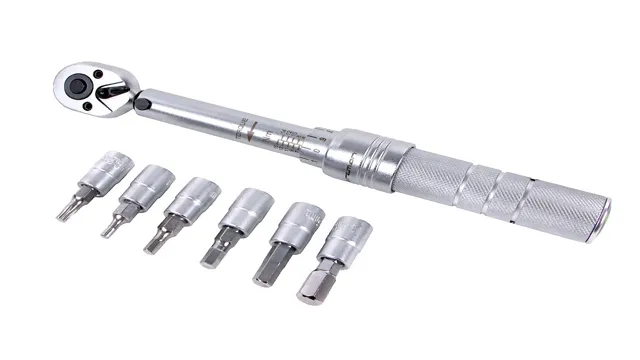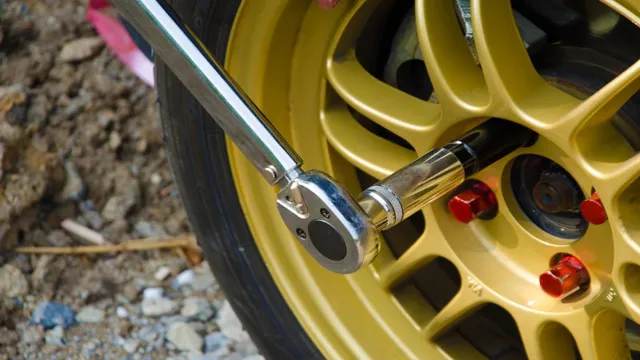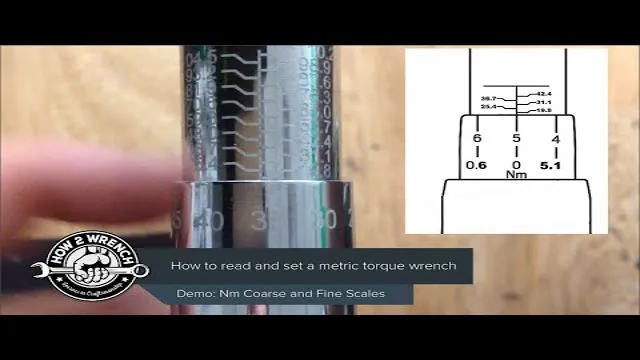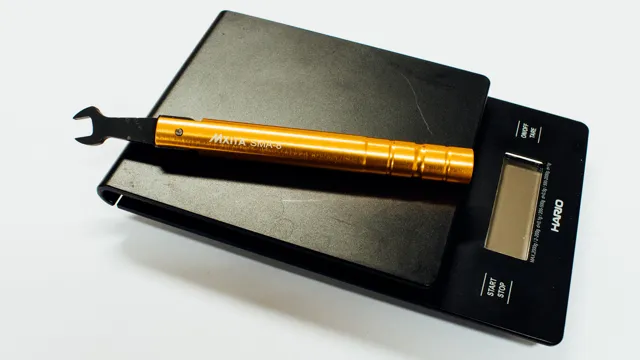How to Set Torque Wrench Inch Pounds: A Step-by-Step Guide for Accurate Tightening
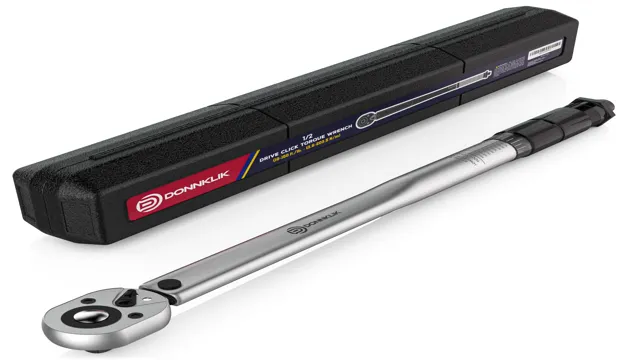
Setting the torque wrench inch pounds can be confusing for someone who is not used to working with tools. However, it is an essential step to ensure that your fasteners are tightened correctly and that your equipment is working efficiently and safely. In this blog post, we will guide you through the process of setting the torque wrench inch pounds, step by step.
We’ll cover what torque is, how to select the right torque value, and how to use the torque wrench properly. By the end of this post, you’ll have all the information you need to set your torque wrench inch pounds with confidence and accuracy. So, grab your wrench and let’s get started!
Understanding Torque
If you’re working with machinery or repairing your car, knowing how to set torque wrench inch pounds is essential. Torque refers to the force or twisting power used to tighten bolts and nuts. When you tighten a bolt, you want to make sure it’s tight enough, but not too tight that it’ll break or strip.
A torque wrench is a tool used to measure torque accurately. To set the wrench to the desired torque measurement, you’ll need to consult the manufacturer’s specifications or manuals. It’s crucial to get an accurately calibrated torque wrench as an improperly calibrated torque wrench can lead to inaccurate results.
Additionally, always make sure you’re using the right size socket and working with clean, dry nuts and bolts. By learning how to set torque wrench inch pounds, you can ensure safe and efficient machinery operation or automobile repair.
The Importance of Proper Torque
Proper torque is crucial when it comes to ensuring that bolts, nuts, screws, and other fasteners are correctly tightened to prevent accidents and prevent damage to equipment. Torque refers to the amount of force applied to a fastener to tighten it, and it is measured in pounds or Newton-meters. Understanding torque is essential for anyone who works with tools or machinery, as it can affect the performance and safety of the equipment.
Applying too little torque can cause a bolt to loosen and fail, whereas applying too much torque can strip the threads or fracture the bolt, leading to costly repairs. Using a torque wrench is an effective way to ensure that the correct amount of torque is applied to fasteners. This tool applies just the right amount of force needed to tighten the bolt or nut, preventing under- or over-tightening.
By using a torque wrench, technicians can ensure that machinery and equipment operate safely and efficiently, preventing accidents and breakdowns.
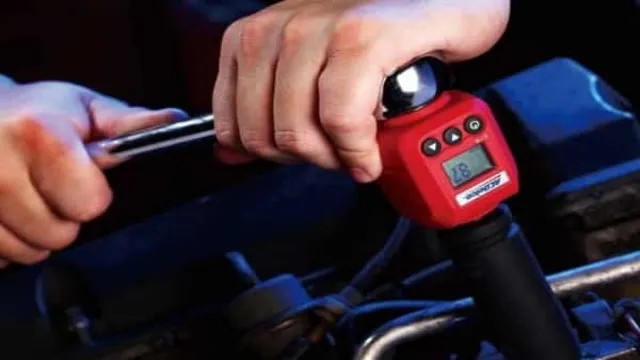
Different Types of Torque Wrenches
Torque wrench Torque is a force that results in rotating an object around an axis or pivot. This force is measured in units of energy or work, such as joules, newton-meters, or foot-pounds. A torque wrench is a device used to apply a specific amount of torque to a bolt or nut in a controlled and precise manner, ensuring the correct torque is applied to avoid under or over-tightening.
There are many types of torque wrenches on the market, including beam torque wrenches, click torque wrenches, dial torque wrenches, and digital torque wrenches. Each type has its advantages and disadvantages, but they all provide accurate and reliable torque measurements for a variety of applications. Beam torque wrenches are the most basic and affordable option, while digital torque wrenches are the most advanced and expensive due to their high level of precision and ease of use.
Whether you’re a professional mechanic or DIY enthusiast, understanding torque and the different types of torque wrenches available can help improve the quality and safety of your work.
Steps to Set Torque Wrench Inch Pounds
If you’re getting ready to tackle a project that requires a certain level of torque, it’s important to know how to set your torque wrench to the appropriate inch pounds. Luckily, the process is pretty straightforward. Start by identifying the torque value needed for your project.
Once you have that number, locate the torque wrench’s adjustment knob and set it to zero. From there, use the wrench’s instructions to adjust the knob until it matches the desired torque value. Make sure the wrench is calibrated correctly before using it to avoid any potential errors.
With a bit of practice, you’ll be able to set your torque wrench to any inch pounds value you need. Just remember to take care of the wrench to ensure its longevity and accuracy.
Step 1: Select the Right Torque Wrench
When it comes to using a torque wrench, it’s important to choose the right one. And once you have the right tool, there are a few steps you need to take to set it properly. Firstly, start by selecting the torque wrench that meets your needs.
Consider the kind of work you will be doing and whether the wrench can handle the load. Next, make sure to set the torque wrench to the right inch pounds for the job you’re working on. Be sure to consult the manufacturer’s instructions on how to do this correctly.
Once you have the wrench set up, it’s important to apply steady pressure on the wrench without jerking it around. Remember, torque wrenches are precision instruments, so treat them with care. Following these simple steps will help ensure that you’re getting accurate results every time you use your torque wrench.
Step 2: Find the Desired Torque
To set a torque wrench in inch-pounds, you need to follow a few simple steps. The second step is to find the desired torque. This is important because using too little torque can result in loose bolts, which can cause dangerous malfunctions.
On the other hand, using too much torque can damage the bolt or strip the thread. To find the desired torque, you will need to refer to the torque specification for your specific project. This can typically be found in the owner’s manual or by searching for the specifications online.
Once you have the specification, ensure that your torque wrench is capable of measuring the desired torque range. If it is not, you will need to purchase a wrench that can accommodate the required torque. By finding and setting the desired torque, you can ensure a secure and safe mechanical connection.
Step 3: Adjust the Wrench
Setting the torque wrench inch pounds can be a bit tricky, but it is essential to get an accurate torque reading for your project. In this third step, we will focus on adjusting the wrench. Once you have set the torque specification and have attached the correct socket, it’s time to begin adjusting the wrench.
Start by rotating the handle of the wrench in a clockwise direction until you reach the desired inch-pound specification. Once you’ve reached the specific torque setting, stop turning the handle. Remember not to exceed the recommended torque specifications to avoid any potential damage.
An over-tightened nut or bolt could lead to a shear failure and potentially be hazardous. If you’re unsure about the correct torque settings, always consult the manufacturer’s instructions or reach out to a professional for additional assistance.
Step 4: Test the Wrench Accuracy
When it comes to ensuring accuracy in your torque wrench, testing is crucial. Once you have properly set your torque wrench to the desired inch-pounds, it is important to check and verify its accuracy before use. To start the testing process, you will need to find a certified calibration lab or torque tester.
These facilities have equipment that can measure the torque applied by your torque wrench accurately. During the testing process, your torque wrench will be used to apply torque to a torque tester, and the results will be compared to the desired torque level set on the wrench. If there is a variance in the reading, adjustments can be made to the torque wrench to make sure it is calibrated correctly.
Overall, if you want your torque wrench to be reliable and accurate every time you use it, regular testing and calibration is a must!
Tips and Precautions for Using Torque Wrenches
One of the most important things to keep in mind when using a torque wrench is how to set it to the correct level in inch-pounds. Firstly, you need to ensure that you have the right type of torque wrench for the job at hand. Once you have the correct tool, make sure to set it to the desired torque level by turning the handle or adjusting the digital settings.
It’s important to note that torque wrenches should never be used to apply more force than the manufacturer specifies, as this can harm both the tool and the object being tightened. Additionally, always double-check the accuracy of your torque wrench before use, with regular calibration and testing as necessary. Remember, using a torque wrench properly is crucial for ensuring that bolts and nuts are tightened to the correct level, which can help prevent damage, accidents, and other safety hazards.
Tip 1: Store the Wrench Properly
Torque wrenches If you’re going to use a torque wrench, it’s essential to know how to store it properly. You don’t want to just toss it into a drawer or toolbox. First off, make sure to clean it after every use.
This will prevent any buildup of dirt or debris that could lead to inaccurate readings. Once it’s clean, you can store it in a dry, cool place – preferably one that’s out of the way of any heavy equipment or tools. It’s also a good idea to keep it in its box or case to protect it from any accidental damage.
If you have a digital torque wrench, you’ll want to remove the batteries before storing it as well. By taking these simple steps, you’ll be able to keep your torque wrench in top working condition, ensuring accuracy and reliability for all your future projects.
Tip 2: Keep the Wrench Clean and Dry
One of the essential tips for using torque wrenches is to keep them clean and dry. The wrenches should be kept free from any kind of dust or dirt that could affect their accuracy. Dirt and grime can wear down the internal parts of the wrench, leading to a loss in the torque’s accuracy.
Therefore, after every use, the wrench should be cleaned with a soft and dry cloth. Avoid using any solvents or cleaning agents that could harm the wrench’s surface. The wrench must be stored in a dry place to prevent corrosion and rusting.
If you have a high-quality torque wrench, you must take proper care of it to enhance its lifespan. By keeping your wrench clean and dry, you can ensure that it performs optimally for years to come.
Conclusion
And there you have it, folks. Setting a torque wrench to inch pounds is simple and straightforward. Just remember to follow these easy steps: Calibrate the wrench, adjust it to the desired torque value, and apply the force until you hear the satisfying click.
It’s like solving a puzzle, only with bolts and nuts. So the next time you need to tighten a bolt to a precise specification, don’t hesitate to give your torque wrench a spin. Your machinery will thank you for it, and you’ll feel like a pro in no time.
And remember, when it comes to torque wrenches, inch pounds are the perfect way to…
.. tighten your nuts!”
FAQs
What is a torque wrench?
A torque wrench is a tool used to measure and apply a specific amount of force or torque to a bolt or nut.
How does a torque wrench work?
A torque wrench uses a spring-loaded mechanism or a clicking sound to indicate when the desired torque has been reached.
Why is it important to use a torque wrench?
Using a torque wrench ensures that nuts and bolts are tightened to the correct torque specifications, which is crucial for safety and preventing damage to equipment.
Can I use a torque wrench for both inch pounds and foot pounds?
Yes, most torque wrenches have the ability to switch between inch pounds and foot pounds.
How often should I calibrate my torque wrench?
It’s recommended to calibrate your torque wrench at least once a year or after 5,000 cycles (whichever comes first).
Can I use a torque wrench for loosening bolts?
No, torque wrenches are designed only for tightening bolts to a specific torque value.
Is it okay to use a torque wrench to tighten spark plugs?
Yes, using a torque wrench to tighten spark plugs is recommended to avoid over-tightening or under-tightening, which can cause damage to the engine.

